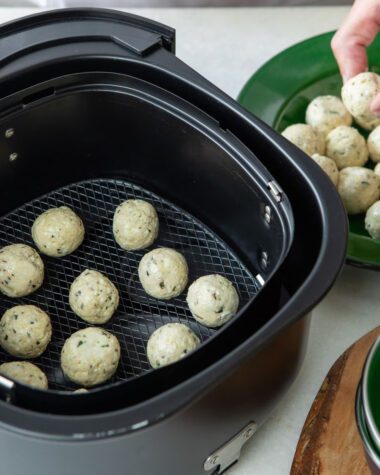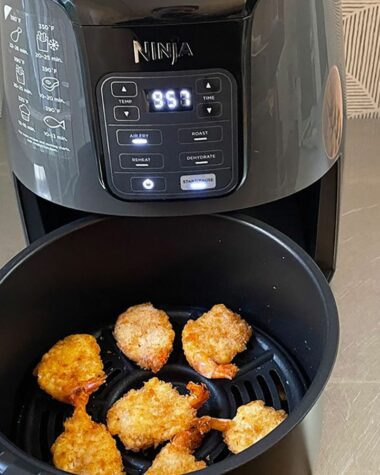On a hot summer day, nothing beats a refreshing cool brew. Nevertheless, if your 30-inch refrigerator isn’t operating correctly, you may wind up with a nasty, lukewarm beverage different from what you were looking for. So, what exactly is the science of refrigeration? Refrigerators are ubiquitous, but do you know how they work?
In this blog post, we here at DaDongNY will cover everything you need to know about refrigerators and how it works. We will also be discussing the necessity of refrigeration in food and beverage, the several garage-ready refrigerator parts that do the magic of preserving and keeping your food last for a long time, and much more. It’s your one-stop source for food refrigeration information; you won’t need to look elsewhere.
What Exactly Is A Refrigerator?
A refrigerator helps cool food and beverages by pumping a coolant through a closed container, causing it to vaporize and absorb heat from the refrigerator. The vaporized refrigerant is then fed via coils outside the refrigerator and heats the vapor to convert it into liquid.
A refrigerator is among the essential household appliances in today’s modern world. The first electric refrigerator, which incorporated a refrigeration unit on top of an icebox, was created in 1913 by American Fred W. Wolf.
When William C. Durant created the first household refrigerator with a compressor in 1918, the mass manufacture of residential refrigerators started.
Related Article: Keeping History Fresh With An Ice-Cold Fridge
This appliance has been a game-changing invention, making it possible to conveniently preserve food, which used to be a massive challenge. With this, food that’s usually rotting in a matter of hours on the counter now lasts a couple of weeks in the fridge. Refrigerators make our life easier, but it also helps us stay healthy by lowering the danger of food-borne illnesses, as reducing the temperature substantially decreases bacterial development. Bacterial growth is completely stopped when something is frozen.
Different Kinds Of Refrigerators
The following outline the different types of refrigerators, which are important in determining which refrigerator is particularly fit for your household.
- Top-Freezer Refrigerator
A top-freezer refrigerator is a standard refrigerator style that has been in the marketplace for quite some time. These refrigerators have their freezer located on the top portion, and since the freezer is far from the compressor, which is located on the bottom side, it pushes the heat out and helps to keep the item cold without very much strain. It also enhances the energy efficiency of a top-freezer refrigerator.
| Pros | ✅ There are several modern designs to choose from ✅ It includes a built-in organizer ✅ The refrigerator compartment is in line of sight ✅ There is more freezer space |
| Cons | ✖️ It is expensive |
- Bottom-Freezer Refrigerator
The bottom-freezer refrigerator, as opposed to the top-freezer refrigerator, has its freezer located on the bottom part. These refrigerators are available in an array of designs. They are perfect for individuals who usually keep more frozen food than fresh produce. The freezer door even features a drawer layout and built-in organizers that can provide additional food space. These refrigerators are more expensive than top freezers and inappropriate for those who want to stay upright whenever they need something from the fridge.
| Pros | ✅ There are several modern designs to choose from ✅ It includes a built-in organizer ✅ The refrigerator compartment is in line of sight ✅ Has more freezer space |
| Cons | ✖️ It is expensive |
- Side-by-Side Refrigerator
Side-by-side refrigerators are perfect for individuals who eat fresh and frozen foods and want more than enough storage space. Their refrigerators and freezer compartments are situated next to each other. Side-by-side refrigerators are slim in design and require little room to open the doors. Their shelves are small and don’t have enough space to hold huge amounts of food. On the other hand, most of their freezers have water and ice dispensers outside. Compared to other refrigerator styles, side-by-side are inexpensive yet not energy-efficient.
| Pros | ✅ There is plenty of room for both fresh and frozen food ✅Thin doors take very less room when opened |
| Cons | ✖️ It comes with short shelves, making it hard to store large amounts of food items ✖️They are inefficient in terms of energy use |
- French Door Refrigerator
French door refrigerators are the latest design trend, with the freezer located on the bottom part and two refrigerator doors that open outwards. Most of their models have one or two freezer compartments with structured racks on the bottom. Opening both refrigerator doors simultaneously allows you to view everything within, but opening one door at a time prevents cold air from escaping. The french door refrigerator has plenty of storage room for both fresh and frozen foods, and they have detachable bins and trays that assist in modifying the refrigerator’s configuration. Despite being expensive, they are
| Pros | ✅ They include larger bins and wider shelves ✅ Fewer space requirements are needed to open refrigerator doors ✅ They are available in visually appealing designs |
| Cons | ✖️ less efficient in terms of energy use ✖️ It is expensive |
- Counter-Depth Refrigerator
Counter-depth refrigerators are accessible in various styles and depths to match your kitchen. They usually have the same amount of space for storage capacity as other refrigerators, but they only extend up to 1 or 2 inches past the kitchen cabinets and countertops. These appliances have the appearance of built-in refrigerators and are ideal for small kitchen spaces.
Counter-depth refrigerators are classified into four types: top-freezer, bottom-freezer, side-by-side, and french door. Compared to standard-depth refrigerators, they feature less extra storage for frozen and fresh foods. In addition, counter-depth refrigerators are more costly than other types of refrigerators.
| Pros | ✅ They are more spacious than standard-depth refrigerators ✅Comes in a design that is both sleek and seamless |
| Cons | ✖️ They do not have the same depth as traditional refrigerators ✖️ It is expensive |
Related Article: Counter-Depth Refrigerators: A User’s Guide
- Compact Refrigerator
Compact refrigerators, or mini-refrigerators, are considerably smaller than traditional refrigerators and ideally suited for tiny kitchens, rec rooms, offices, etc. These refrigerators are available in various configurations and sizes, as well as various designs such as double doors, separate freezer chambers, glass front doors, and so on. Some compact refrigerator types are meant to be installed within cabinets, while others are freestanding. They also come with shelves to help you organize your food with ease.
| Pros | ✅ They are more compact, lightweight, and portable ✅ Has lower electricity consumption ✅ Could be kept in unused room corners |
| Cons | ✖️ Has very little food storage capacity ✖️ These refrigerators do not always feature a freezer compartment |
- Smart Refrigerator
Smart refrigerators are one of the most current refrigerators on the market today. These refrigerators may be linked to the internet and controlled by smart devices such as phones and tablets. With smart devices, you can see the refrigerator’s contents, write and receive messages, generate calendar notes that display on the refrigerator screen, and receive alarm notifications when the door is left open for an extended amount of time. Smart refrigerators use less energy but are more expensive than standard refrigerators. Just a few businesses now make smart refrigerators with different features.
| Pros | ✅ Can connect to smart gadgets and refrigerator displays ✅Has outstanding convenience and simplicity of usage |
| Cons | ✖️ It is more expensive than its counterparts ✖️ Extremely high maintenance |
Ten Most Common Refrigerator Features
Most refrigerators have similar features, like shelves, crisper drawers, and on-door sections. Here are some more things to think about if you’re searching for more than the essential items:
- Adjustable Shelving
This feature not only makes cleaning easier but also provides you the option of storing your food and beverages. Just modify the shelves’ position to store a large item now and then.
- Air Filtration System
This feature can be found in brand-new refrigerator models. The refrigerator’s air filtration system helps in the deodorization of your appliance.
- Ice And Water Dispensers
This feature eliminates the necessity to keep a chunky water filtration system or ice cube trays in your refrigerator. They could, however, use greater amounts of energy and would also need the most maintenance.
- Beverage-Can Dispenser
Easily organize your cans with built-in or mobile dispensers to accommodate soda or beer cans.
- Moisture Control
This feature regulates the moisture in your refrigerator, wherein fresh produce and fruits are much more vulnerable to spoilage if not kept humid.
- Energy-Saving Mode
Several Energy Star-certified refrigerator models can consume up to 20% less energy, resulting in lower electricity costs.
- Programmable Control Pad
You may use this feature to regulate the temperature of the fridge, lock the ice and water dispensers, and set the amount of water you want to distribute, among other things.
If these features fall short of your expectations, we recommend buying a smart refrigerator model to take your fridge game to the next level. Here are some of the few smart refrigerator features that vary, depending on your trusted brand:
- Smartphone Connectivity
Allows you to check or regulate the temperature inside, send notifications if the refrigerator door is open, and more.
- A Digital Screen
Shows what’s inside and allows you to check nutritional content and expiration dates for your groceries and build grocery lists and healthy meal plans.
- Built-In Cameras
Enables you to access the difficult-to-see containers and foods at the back of your fridge without opening the doors.
How Does A Refrigerator Work?
All foods have helpful gut bacteria that are typically harmless. Such foods, like yogurt and bread, are produced entirely of bacteria such as lactobacillus and yeast. When these bacteria multiply too quickly, they contaminate food.
The fundamental premise behind refrigeration is to minimize decomposition by slowing the development of microorganisms in our food. The refrigerator accomplishes this by maintaining a continuous low-temperature environment through evaporation.
There’s a widespread myth among refrigerators that they pump cold air into their compartments to reduce the temperature. On the contrary, they take the heat from the inside air and distribute it on the outside.
A liquid absorbs heat as it evaporates into the air. This is why when you rub your hands in alcohol, your skin feels cold. It is additionally the reason why we shed when our bodies become warm. A refrigerator operates by employing the force of evaporation in order to freeze its contents while prohibiting the produced air from escaping. It is then reverted to its liquid state to begin the process all over again.
The Cycle Of Refrigeration
It just takes four major components to complete the refrigeration cycle, which is incredibly easy to attain. The cycle is as follows:
- Compressor
It begins with the compressor. This is referred to as the refrigerator’s heart. The compressor raises the pressure and temperature of the coolant before delivering it to the condenser.
Related Article: Six Easy Steps on How to Reset Your Refrigerator Compressor
Compression could well be accomplished using a range of mechanical processes, and as a result, different kinds of compressors are employed in HVAC and refrigerators nowadays. Some popular ones include:
- Reciprocating compressors
- Scroll compressors
- Rotary compressors
- Condenser. In the refrigerator’s rear is a collection of coils called the condenser. Its purpose is to turn the heated high-pressure coolant from the compressor to liquid. Afterward, the liquid is then pumped inside the expansion valve.
- Expansion Valve. Also known as a capillary tube, the expansion valve considerably reduces the atmospheric pressure of the coolant, dropping its boiling point.
- Evaporator Coils
The low-pressure liquid is fed through the evaporator coils and gradually evaporates. The low-pressure liquid is then passed back to the compressor, where the refrigeration cycle starts again.
Are Refrigerators Safe?
While it is true that refrigerator breakdowns are very rare and that they break down considerably less often than many other kitchen appliances due to their continuous use, this does not mean that consumers should be complacent about their refrigerator’s reliability.
Refrigerators contain hazardous gas but don’t panic, it’s just an insignificant amount that helps the equipment cool all the foods and beverages inside to cool, and it can sometimes leak if there’s an issue with the appliance.
That said, you may be wondering how to keep your refrigerator in check
Things To Look Out For
Your refrigerator will often start to malfunction in an extremely visible way. If your food and drink are warmer than expected, inspect whether the thermostat is set to the right temperature. If the temperature on display does not match the refrigerator’s coldness, it could indicate an issue.
Another thing to take into account is the smell of the refrigerator. Your refrigerator usually smells like food, depending on what kind of items you store; however, any other odor should raise your suspicions.
Keep an eye out for a strong ammonia scent, which could indicate that the gasses inside your refrigerator are escaping. If this is the case, you must address it as soon as possible, and you might even need to vacate the kitchen.
That may appear to be an excessive approach, but seeping ammonia isn’t something you should be near at any time.
Different Refrigeration Methods In Food And Beverages Industry
- Industrial Refrigerators
Industrial refrigerators are required as standard equipment for making, serving, or selling food dishes and products. You must guarantee that your preparation is impeccable. If you don’t store your food correctly, you can risk endangering someone else’s well-being. Maintaining food at the proper temperature ensures your products are fresh and in the finest possible condition.
Your hygiene reputation is everything in the food and beverage industry. Getting the highest possible score implies that you truly appreciate and care about what you’re doing. Also, it is far more enticing to customers and gives them a sense of security that you take all required precautions to protect them.
- Refrigerated Vehicles
Like any other, the food and beverage business relies heavily on suppliers. So to transport securely and in excellent shape, suppliers opt for refrigerated trucks. Refrigerated vehicles are essential for keeping food goods in peak condition, from fresh meat to fruits and vegetables.
Think about the situation in which meat sat in an unrefrigerated truck all day. That is not a safe way to handle food and is unsuitable for human consumption. Refrigerated vehicles exist in various forms and sizes, from small vans to trucks. With this, there is no reason for any supplier to use unrefrigerated vehicles.
Refrigerated vehicles work in the same way as regular refrigerators do. But, their main purpose isn’t to cool items down to ensure that food products reach their destination in the same condition they were transported. Additionally, unlike standard refrigerators, they are not powered by a power source but rather by a direct drive or an extra compressor.
In The Event That Your Refrigerator Malfunctions, What Should You Do?
Did your refrigerator work better than it did yesterday? If you notice a major issue with your refrigerator, such as leaking water, it is best to contact professional help, especially if you need to learn about your appliance. The following are the most common refrigerator problems:
- There’s An Ice Buildup In The Freezer
It’s possible that the freezer door was left open, allowing warm moisture and humid air to infiltrate. As moist air reaches the freezer over time, it causes the freezer to freeze solid. You might have to remove the food, disconnect the freezer, and defrost it.
- The Refrigerator Is Making A Lot Of Noise
Refrigerators increasingly become louder over time. But, if you suddenly hear a new and unusual noise inside, it could be coming from the fan at the back of the fridge. You may unplug the fridge, remove the back panel, and inspect the fan. Something may be blocking the path, such as insulation or wiring.
- There’s A Leak Underneath The Crisper Drawers
A leakage on your fridge might be caused by a clogged defrost drain, which can be easily removed by defrosting the refrigerator. Unplug the fridge and remove the rear wall of the freezer to check for anything that might be clogging the opening at the bottom of the evaporator, such as ice, food scraps, or plastic pieces.
- The Freezer And Refrigerator Sections Are No Longer Cold Enough
Examine the rear of the freezer compartment’s wall. If there is frost buildup, you will likely only need to defrost your refrigerator. If there is no frost buildup and goods aren’t keeping cold, it may not be repairable, and it’s time to look for a new fridge.
- The Refrigerator Has A Bad Odor
Unplug the refrigerator, empty it, and toss away any leftover food. Clean the entire fridge with a baking soda and water solution, or place a bowl of oats, charcoal, fresh dry coffee grounds, and unscented kitty litter, which are among the items that will absorb unpleasant odors inside the fridge.
FAQs
- Where Should I Put My Refrigerator?
Keep the fridge away from direct sunlight. It also needs to be kept away from other heat sources, such as microwave ovens and other appliances in your kitchen. Furthermore, keep in mind that the fridge is not entirely enclosed, and you should always maintain a 2-inch gap on both sides for ventilation and to prevent your under-counter refrigerator from knocking your countertop.
- How Long Can Food Be Stored In A Refrigerator Without Power?
Without power, your refrigerator should keep your food fresh for 4 hours. Some refrigerators have a Cool Pack, a blue plastic compartment filled with liquid in the freezer that absorbs cold air while the refrigerator runs. It then uses this cold air to keep the fridge chilled for 12 hours without electricity.
- What Temperature Should I Keep My Refrigerator At?
To prevent spoilage, keep your refrigerator temperature set at 2-3°C. Keep in mind to avoid getting it over 4°C since bacteria like Listeria are more likely to germinate.
Furthermore, for beef preservation, a minimum temperature of -18°C is a pretty good bet.
- Why Does Every Refrigerator Switch On And Off During The Course Of The Day?
Suppose you’ve observed your refrigerator starting and stopping during the day. This is because an internal thermostat controls the refrigeration cycle. When the fridge becomes too cold, it turns off the compressor; when it becomes excessively warm, it switches it back again.
This is because the compressor on non-inverter refrigerator models cannot run at variable speeds. Setting up the compressor creates the loudest noise and requires the most energy. Nevertheless, inverter refrigerators don’t switch off the compressor when the temperature reaches the desired level. Instead, it slows down the compressor to keep the temperature stable. As a result, they are quieter and more economical.
Bottomline
Refrigerators have long been a part of our daily lives since their distribution to the market. That is why it’s important to learn everything about this equipment to understand how it does the magic of cooling your food and beverages and the main components contributing to the refrigeration process to maintain and keep your fridge in its peak working condition. With this article, we hope that we have provided everything and anything there is to know about your cool and handy refrigerator.
Articles You May Be Interested In
- A Cooler Choice: Whirlpool v.s GE Refrigerators (Full Guide)
- Refrigerator Check: LG v.s Samsung Refrigerators (Full Guide)
- Cool Tech Showdown: Frigidaire v.s Whirlpool Refrigerators (Full Guide)
- Fridge Favorites: Bosch v.s LG Refrigerators (Full Guide)
- Cooling Conundrum: Whirlpool v.s Samsung Refrigerators (Full Guide)
- Tale Of The Tape: Maytag v.s Whirlpool Refrigerators (Full Guide)
- Fridges in Focus: Thermador v.s Sub-Zero Refrigerators (Full Guide)
- Fridge Frenzy: Sub-Zero v.s Viking Refrigerators (Full Guide)
- The Big Chill: Whirlpool v.s KitchenAid Refrigerators (Full Guide)
- Refrigerator Bout: Whirlpool v.s LG Refrigerators (Full Guide)








